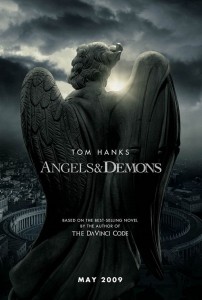
TUSCALOOSA, Ala. — “Angels and Demons,” the projected summer blockbuster starring Tom Hanks and directed by Ron Howard, has a most un-Hollywood-like aspect central to its plot — particle physics.
The plot of the movie, which debuted May 4 in Rome and premieres in the U.S. May 15, focuses on the use of antimatter in an effort to destroy the Vatican.
“It’s not every day that a major motion picture places particle physics in the spotlight … ,” according to a Web site outlining a series of related science lectures nationwide.
“Physicists believe that at the time of the ‘big bang’ equal amounts of matter and antimatter came into existence,” said Dr. Louis Clavelli, professor of physics at The University of Alabama. “It was important to our existence that, when most of this mutually annihilated, a small amount of normal matter survived.”
U.S. physicists are taking advantage of the attention surrounding the movie to discuss the science involved, the Large Hadron Collider, and their interest in particle physics.
Clavelli, a theoretical physicist, will host a related, non-technical talk at 7:30 p.m., May 22 in Gallalee Hall, room 227. Gallalee is near the corner of Hackberry Lane and University Boulevard on the UA campus. Following the talk and a question and answer session, there will be a public viewing from the telescope atop Gallalee Hall.
The UA event, one of several dozen such lectures scheduled nationwide, is aimed at educating the public about the reality of antimatter and particle physics in general, Clavelli said.
While Clavelli emphasized the book and movie is “99 percent fiction, though potentially entertaining fiction,” he said he welcomes the added opportunities to discuss physics as a result.
In the movie, and the Dan Brown novel from which it was adapted, antimatter gets stolen from CERN, the European Organization for Nuclear Research.
In reality, CERN is home of the Large Hadron Collider, a gigantic scientific instrument near Geneva, Switzerland. Teams of physicists from around the world are involved in research with the Large Hadron Collider, the world’s largest particle accelerator. It’s used by physicists to study the world’s smallest known particles and in an attempt to recreate conditions just after the “Big Bang.”
Portions of the move were filmed on location at CERN, a center Clavelli has visited multiple times in his research.
The physics at the heart of “Angels and Demons” – the potential destruction of the Vatican by a small chunk of antimatter – calls attention to what happens when matter and antimatter meet. This, in turn, calls attention to the fact that the absence of practically any antimatter in the universe is crucial to humankind’s existence. Understanding that absence is one of the big challenges of particle physics, researchers said.
For more information about CERN and the Large Hadron Collider see http://public.web.cern.ch/public/en/LHC/LHC-en.html.
For more information about the UA event, contact Karen Lynn in the department of physics and astronomy, 205/348-5050.
The department of physics and astronomy is part of UA’s College of Arts and Sciences, the University’s largest division and the largest liberal arts college in the state. Students from the College have won numerous national awards including Rhodes Scholarships, Goldwater Scholarships and memberships on the USA Today Academic All American Teams.
Contact
Chris Bryant, UA media relations, 205/348-8323, cbryant@ur.ua.edu; Dr. Louis Clavelli, 205/348-3794, lclavell@bama.ua.edu